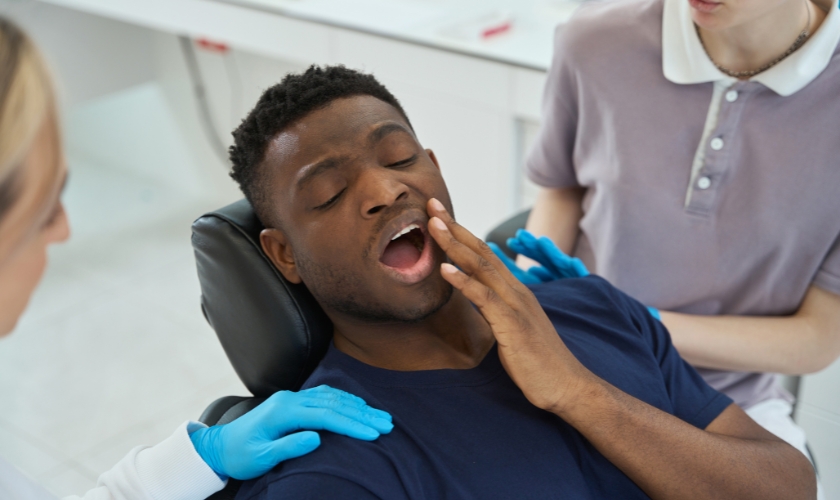Broken vs. Cracked Tooth: What’s an Emergency and What Can Wait

A sharp tooth crack or a chipped piece of enamel can be alarming. You’re left wondering if it’s an emergency or if waiting for a bit is reasonable. This guide separates what truly needs same-day treatment and what can wait for a scheduled appointment—so you can act with confidence and protect your smile.
Is it a true emergency?
Emergencies deserve immediate attention. These situations can affect breathing, cause the spread of infection, or risk tooth loss:
- Knocked-out adult tooth (avulsion).
- Uncontrolled bleeding.
- Facial swelling with fever or trouble swallowing.
- Severe trauma to the face or jaw.
Emergency dentists define emergencies as potentially life-threatening situations that require immediate care to stop bleeding, control severe infection, or address major trauma.
Urgent, but generally safe to wait 24–48 hours
- Minor chip with no pain or sensitivity.
- Craze lines (superficial cracks in the enamel).
- Lost filling or crown with no sharp edges or deep pain.
However, call your local dental office; even “minor” problems can worsen.
Broken vs. cracked: how to tell
A broken tooth usually means that a part is missing, often from biting into something hard or a blow. A cracked tooth may sometimes show a hairline fracture or show no sign at all until you bite; pain may shoot up during the release of biting pressure as the crack flexes the dentin or nears the pulp.
Watch for red flags that push a tooth into the gums during the cracked tooth situation:
- Sharp pain on biting
- Sensitivity to hot, cold, or sweets that lingers
- Swelling of the gum around the tooth
These signs show a greater risk of infection.
Need local help right away? Call an emergency dentist in Rocklin for guidance and a same-day evaluation.
What to do in the first hour
If a permanent tooth is knocked out
- Pick it up by the crown (the white part), not the root.
- If dirty, rinse briefly with milk or saline—don’t scrub.
- Replant immediately if possible, and bite gently on gauze. If you can’t replant, place it in milk or saline, and go forward with dental care as soon as possible.
- The best chance to save a knocked-out tooth is receiving treatment within 30 to 60 minutes post-accident.
Important: Do not replant a baby tooth (primary tooth).
If a tooth is broken or cracked
- Rinse with lukewarm water; use a cold compress for swelling.
- Save any tooth fragments in milk or saline.
- Avoid chewing on that side; skip too-cold or too-hot drinks and foods along with sweets.
- Over-the-counter pain relief can help until you’re seen (if safe for you).
How your emergency dentist will help
Treatment according to the severity of the crack and the structures involved:
- Bonding or onlay to reinforce weakened enamel and cusps.
- Full crown for deeper fractures.
- Root canal therapy is used when the pulp is inflamed or infected.
- Extraction and replacement only when a fracture extends below the gum and the tooth can’t be restored.
If there’s heavy bleeding, swelling of the face along with fever, a knocked-out adult tooth, or severe pain, treat it as an emergency and get treated right away. For small chips and painless, shallow cracks, waiting for a little while is usually harmless, but schedule your appointment with Discover Dental Rocklin promptly to avoid complications down the line.


